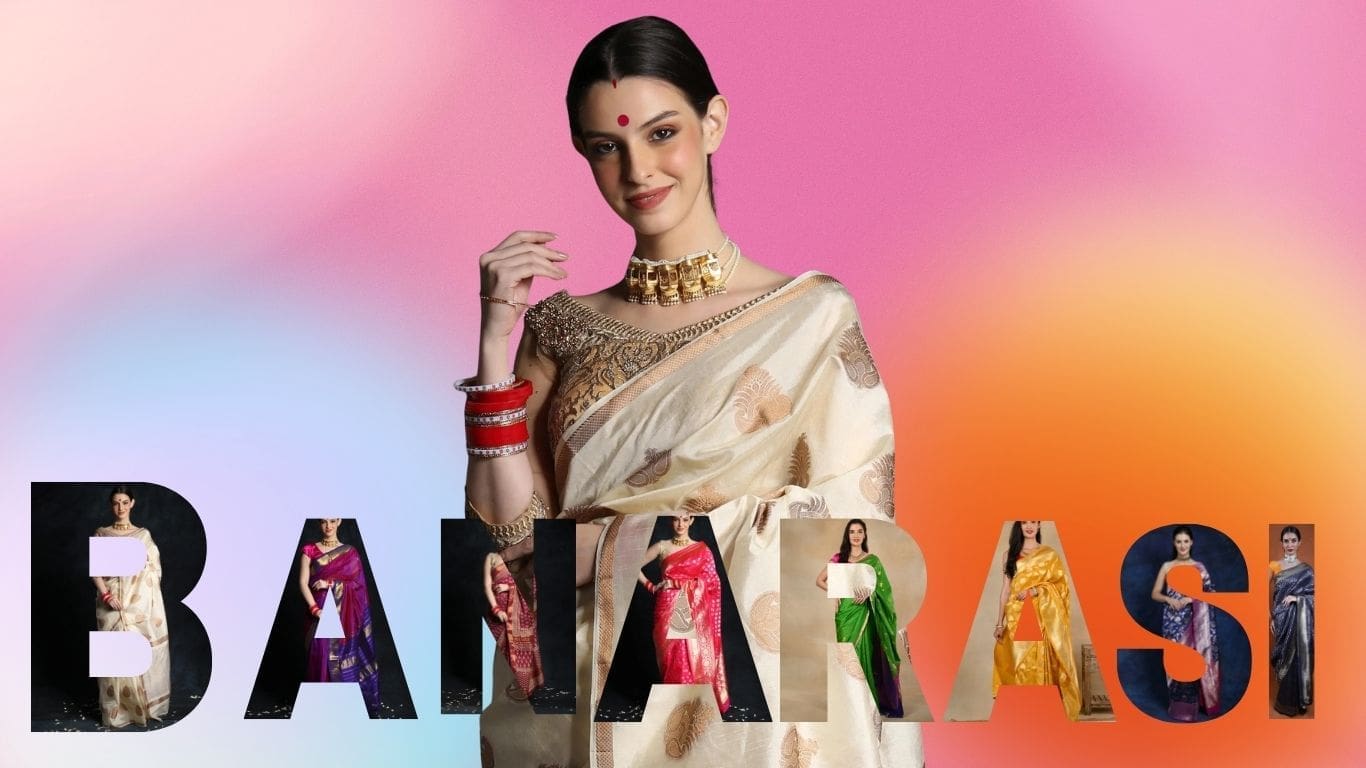The Banarasi sari, with its intricate brocade and majestic red-and-gold hues, has long been an iconic symbol of Indian culture and tradition. This exquisite garment has transcended its origins as a regional textile to become a cultural phenomenon, captivating the hearts of people across the subcontinent and beyond. In this blog, we’ll explore the significance of the Banarasi sari in popular culture, its impact on aesthetics, and its enduring appeal as a representation of India’s rich heritage.
A Bridal Dream
In North India, the Banarasi sari is an integral part of the wedding ensemble, particularly for the bride. The red-and-gold creation is a coveted possession, symbolizing beauty, elegance, and sophistication. It’s a dream for many women to wear a Banarasi sari on their special day, as it’s believed to bring good luck and prosperity to the newlyweds. This tradition has been passed down through generations, with the sari becoming an aspirational symbol of bridal attraction. The allure of the Banarasi sari extends beyond North India, influencing the aesthetics of similar traditions in Western India and the Deccan.
Cultural Impact
The Banarasi sari has had a profound impact on popular culture, particularly in the era of color film. The sari’s association with the divine and the royal has been reiterated through its representation in visual art, reinforcing its status as a cultural icon. The sari’s majestic beauty has been immortalized on the silver screen, with many Bollywood films featuring the Banarasi sari as a symbol of luxury, opulence, and tradition. This has further cemented its place in the collective consciousness of the Indian people, making it an integral part of the country’s cultural identity.
International Recognition
The Banarasi sari’s appeal extends beyond India’s borders, with its exotic beauty captivating audiences worldwide. The sari has represented India internationally at prestigious exhibitions, including the Great Exhibition at London in 1851 and the Textile and Ornamental Arts of India display at New York in 1955. More recently, the Festivals of India abroad have featured the Banarasi sari in their displays, showcasing the craftsmanship and beauty of Indian textiles to a global audience. This international recognition has contributed to the sari’s romance, inspiring revival and replication as contemporary adaptations.
The Art of Brocade
The Banarasi sari’s intricate brocade is a testament to the skill and craftsmanship of Indian artisans. The process of creating a Banarasi sari is labor-intensive, with weavers spending months, sometimes even years, to complete a single piece. The brocade technique involves weaving metallic threads, usually gold or silver, into the fabric to create intricate patterns and designs. This painstaking process has been passed down through generations, with each weaver adding their own unique touch to the craft.
Preserving Tradition
The preservation of traditional crafts is essential to maintaining India’s cultural heritage. The Banarasi sari is a prime example of this, with efforts being made to document and showcase the craft for future generations. Museums and cultural institutions have played a crucial role in curating and preserving the masterpieces of Banarasi weaving, providing a platform for artisans to showcase their work and inspiring a new generation of weavers.
Contemporary Adaptations
The Banarasi sari’s timeless appeal has led to its adaptation in contemporary fashion. Designers have incorporated the traditional brocade technique into modern designs, creating a fusion of traditional and modern styles. This has made the Banarasi sari accessible to a wider audience, appealing to those who appreciate the beauty of traditional craftsmanship but desire a more modern aesthetic.
Conclusion
The Banarasi sari is more than just a garment; it’s a cultural icon that represents the beauty, elegance, and sophistication of Indian tradition. Its impact on popular culture, aesthetics, and international recognition is a testament to its enduring appeal. As we move forward in an increasingly globalized world, it’s essential to preserve and promote our cultural heritage, ensuring that the Banarasi sari continues to inspire and captivate audiences for generations to come.

